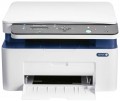Max resolution
The maximum resolution of the image to be printed. It is usually indicated by two numbers indicating the number of dots per inch (dpi) horizontally and vertically, for example 1200x600. The detail of the image depends on this parameter – the higher the resolution, the more fine details the printer is able to convey and the better their image will be. High print resolution is important, foremost, operating with graphic material; low resolution is sufficient for high-quality text display. So there are the following options:
600x600,
1200x600,
1200x1200,
1800x600,
2400x600,
2400x1200,
2400x2400,
4800x600,
4800x1200,
4800x2400,
5760, and
higher print resolutions.
First page print
The time passed from pressing the Copy button to the completion of the first copy in MFPs. Typically specified for low quality black and white printing on A4 paper. The time for the first copy to be released is the longest (because of the time to prepare for work and scan the document); subsequent copies of the same document are printed much faster.
Fast first copy time is important if you have to copy documents frequently.
B/W copy
Black and white copy speed – the number of copies of one page that the MFP can produce in 1 minute. Typically indicated for poor print quality. This option is important if you often need to make many copies of a single document.
B/W printing
The number of pages the printer can produce per minute in black and white mode. Typically indicated for low print quality, higher print quality takes longer. This setting is important if you need to frequently print text documents.
Monthly Duty Cycle
The maximum number of pages that the MFP can print in a month while remaining fully operational.
Black Ink Page Yield
Approximate number of pages that the MFP can print in black and white mode without replacing the cartridge. In fact, this greatly depends on the specs of the images to print, so the actual resource may greatly differ from the claimed one in one way or another. Nevertheless, according to this indicator, it is quite possible to evaluate the capabilities of the MFP and compare it with other models.
Cartridge model
Types of cartridges (both black&white and colour) used in the MFP. Some models of the MFP are able to work with third-party cartridges, but this feature usually refers to undocumented, and the manufacturer's warranty applies only to specific types of cartridges. So, use third-party compatible cartridge models with caution.
Cloud printing
Cloud-enabled MFPs allow you to work directly with cloud services without connecting to a PC.
The general point of such printing is that the documents sent for printing (and in the case of MFPs, also scanned materials) are stored on a server on the Internet. Thus, the connectivity of the printer/scanner is not limited to the local network — you can send documents for printing and receive scan results from anywhere in the world where there is access to the World Wide Web. In addition, cloud services make it easy to share access to the MFP and other people.
Note that cloud printing can also be used with MFPs, that do not have such a function by themselves — for this, you need to connect the device to a PC with the appropriate software.
RAM
The amount of built-in memory provided in the MFP.
This parameter determines not only the amount of information that can be simultaneously stored in the device, but also the specifics of memory usage. With relatively small volumes of the built-in storage (up to 400 – 500 MB), it is mainly used to store print tasks and scan results — until the tasks are completed and digital copies of documents are transferred to their destination. Among high-end MFPs, there are modules, which volume is already calculated in gigabytes. Usually, the presence of this amount of internal memory means that the device has an extensive set of built-in tools, including the ability to use it as a temporary storage for document files.

